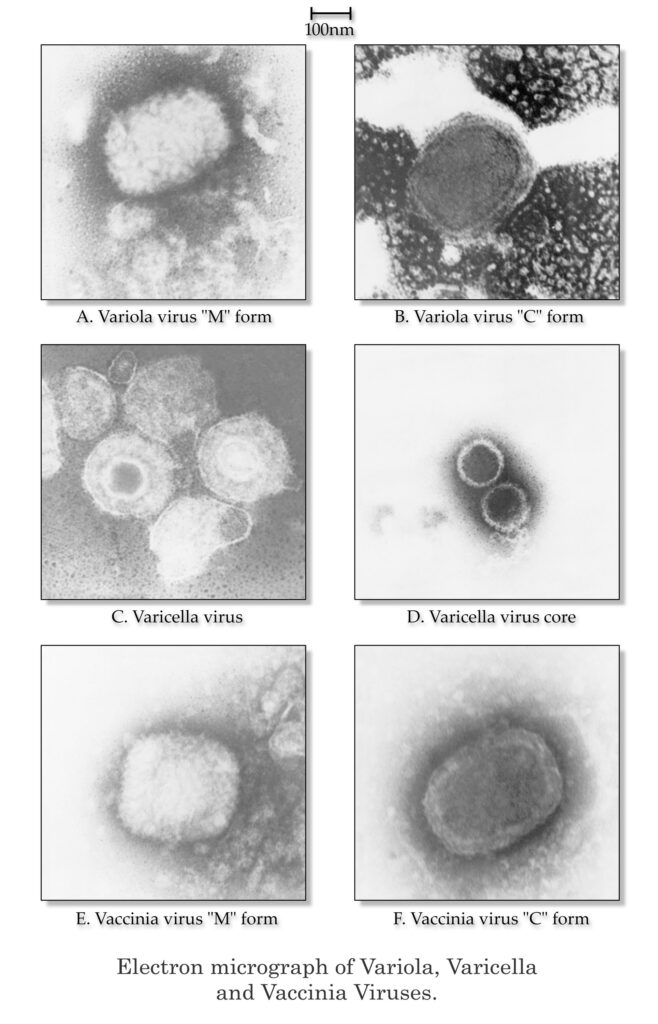Smallpox is a serious, contagious, and sometimes fatal infectious disease. It is caused by the variola virus. In 1977 the World Health Organization declared the world free from natural smallpox. Currently, the virus is believed to exist only in high-security laboratories, although concerns that smallpox may be used as a bioterrorism weapon have been raised since the terrorist attacks of September 11, 2001, in New York City and Washington, D.C.

Courtesy of Centers for Disease Control and Prevention, Department of Health and Human Services
One of the first mentions of smallpox in Georgia was in 1738. During the colonial era the disease greatly affected the state, wiping out whole tribes of Native Americans. In 1768 the Georgia General Assembly passed a law prohibiting inoculation against smallpox for fear of spreading disease to the people not receiving vaccinations. Centuries later, the smallpox vaccination campaign successfully eliminated the disease in Georgia.
The smallpox virus is transmitted through direct contact with infected body fluid or contaminated objects. Two types of the variola virus exist: variola major and variola minor. Variola major is the more severe and the more common form. It has a death rate of 30 percent. Variola minor is less common and much milder, with a death rate of 1 percent. Symptoms of variola major include high fever, malaise, head and body aches, vomiting, and rash, which starts off as small red dots on the tongue and mouth. The spots develop into sores, which then open and spread the disease. The rash subsequently appears on the skin and spreads to the whole body in the form of bumps. The bumps fill with opaque liquid and eventually turn into pustules. The pustules turn into scabs that fall off, which may result in scarring.
Because of emerging concerns about a potential smallpox attack, the Centers for Disease Control and Prevention (CDC) in Atlanta developed the Smallpox Response Plan and Guidelines to offer direction to state and local health officials in a smallpox emergency. The CDC began providing smallpox vaccine to states in January 2003 as part of U.S. president George W. Bush’s effort to vaccinate health workers and emergency responders.






